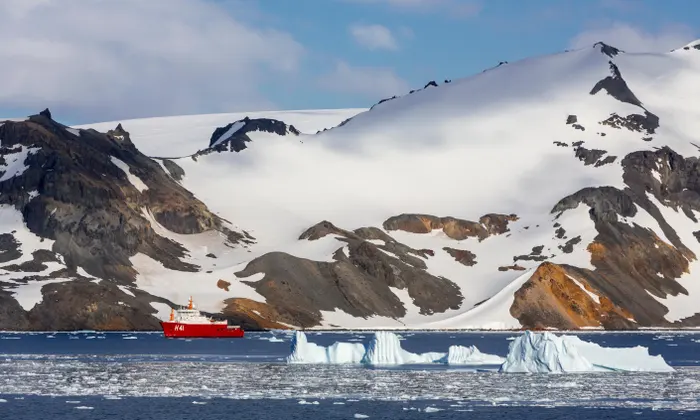Antarctica, the Icy Continent, Registers Record Temperature Anomaly
In an astonishing turn of events, scientists have documented the most intense heat wave ever recorded on Earth, right in the heart of Antarctica. In March 2022, temperatures along the eastern coast of Antarctica soared an astounding 70 degrees Fahrenheit (39 degrees Celsius) above the norm, defying all expectations. This revelation challenges our understanding of Earth’s climate systems and prompts serious questions about the potential impact of climate change on the world’s most remote and frozen continent.
A Startling Heatwave in the World’s Coldest Region
March is typically a transition period in Antarctica, signaling the onset of autumn when temperatures plunge to around minus-54 degrees Celsius on the eastern coast near the Dome C. However, on March 18, 2022, temperatures inexplicably surged to minus-10 degrees Celsius, surpassing even the warmest recorded temperatures during the summer months. Edward Blanchard-Wrigglesworth, the author of the study and an atmospheric scientist at the University of Washington, aptly describes this occurrence as “pretty unbelievable.”
The research sought to uncover the factors behind this unprecedented heat wave, especially during a season when there is less sunlight to influence temperature fluctuations. It was found that the extreme heat is primarily a result of Antarctica’s natural variability, although the warming climate did play a role.
The Unusual Winds and Their Consequences
The heatwave’s origins can be traced back to unusual wind patterns. Traditionally, winds circulate from west to east around Antarctica, acting as a barrier against warmer air masses from the north. However, on this occasion, the winds meandered, allowing a warm air mass from southern Australia to infiltrate East Antarctica in just four days. This rapid incursion of warm air is an unprecedented phenomenon.
The northerly winds also carried moisture with them, resulting in significant snowfall, rainfall, and ice sheet melting along the eastern coast.
Interestingly, this extraordinary meteorological event occurred at a time when Antarctica was experiencing its lowest sea ice levels on record. Despite this correlation, the research team’s findings suggest that the diminished sea ice did not substantially influence the heat wave.
Polar Regions: Where Extreme Weather is Not Uncommon
The study concludes that significant temperature anomalies are not out of the ordinary in polar regions. Analyzing data from global weather stations and computer simulations, the research team found that the most substantial temperature deviations from normal occur at high latitudes. Unlike regions such as Europe or the United States, which seldom experience such anomalous heatwaves, polar regions are uniquely prone to extreme weather fluctuations.
This phenomenon can be explained by the abundance of cold air near the ground in high-latitude areas with extensive snow and ice cover. Typically, air becomes colder with higher altitude, but in these regions, an inversion layer occurs, where warmer air resides above colder air near the surface. In such situations, a warm air mass can displace the cold air, leading to unseasonably warm weather. This typically occurs during or around the winter months when inversion layers are most robust.
Climate Change’s Role Still Under Scrutiny
The extent of climate change’s influence on this heat wave remains a subject of ongoing investigation. The research posits that the warmer atmosphere played a relatively minor role in elevating temperatures during the event. Computer models comparing scenarios with increased greenhouse gas emissions versus a world without such emissions revealed that climate change only contributed an additional 2 degrees Celsius to the heat wave. Nevertheless, by the end of the century, climate change could amplify such heatwaves by an additional 5 to 6 degrees Celsius.
Jonathan Wille, a meteorologist not involved in the study, underscores the significance of this finding. He asserts that even without the influence of climate change, this heat wave would have still been record-breaking.
However, Wille raises the possibility that climate change may have indirectly influenced the atmospheric dynamics, particularly the unusual tropical downpours preceding the heatwave. These downpours may have created a unique atmospheric circulation pattern that contributed to the extreme heat event. Nonetheless, quantifying these complex interactions remains challenging.
Implications for Antarctica’s Future
Edward Blanchard-Wrigglesworth highlights a sobering prospect: if more heatwaves of this magnitude become common in Antarctica due to a warming world, they could have dire consequences for the continent’s ice sheet. A temperature increase of another 5 or 6 degrees Celsius could bring Antarctica perilously close to its melting point. The long-term ramifications of such events, if they indeed become more frequent in the coming decades, remain a pressing concern for scientists and policymakers alike.
In a world where Antarctica was once considered an emblem of unyielding cold, this extraordinary heatwave serves as a stark reminder of the evolving and unpredictable nature of our planet’s climate system. It underscores the urgency of addressing climate change and understanding its far-reaching impacts, even in the most remote and inhospitable corners of the Earth.














